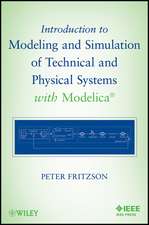Sensor Devices and Systems for Robotics: NATO ASI Subseries F:, cartea 52
Editat de Alicia Casalsen Limba Engleză Paperback – 15 apr 2014
Din seria NATO ASI Subseries F:
- 20%
 Preț: 650.27 lei
Preț: 650.27 lei - 20%
 Preț: 668.55 lei
Preț: 668.55 lei - 20%
 Preț: 992.44 lei
Preț: 992.44 lei - 18%
 Preț: 1239.19 lei
Preț: 1239.19 lei - 20%
 Preț: 1922.81 lei
Preț: 1922.81 lei - 20%
 Preț: 654.37 lei
Preț: 654.37 lei - 18%
 Preț: 1234.00 lei
Preț: 1234.00 lei - 20%
 Preț: 709.78 lei
Preț: 709.78 lei - 20%
 Preț: 656.03 lei
Preț: 656.03 lei - 18%
 Preț: 1854.94 lei
Preț: 1854.94 lei - 20%
 Preț: 374.97 lei
Preț: 374.97 lei - 20%
 Preț: 991.94 lei
Preț: 991.94 lei - 20%
 Preț: 671.02 lei
Preț: 671.02 lei - 20%
 Preț: 1925.96 lei
Preț: 1925.96 lei - 20%
 Preț: 994.73 lei
Preț: 994.73 lei -
 Preț: 389.49 lei
Preț: 389.49 lei - 20%
 Preț: 657.99 lei
Preț: 657.99 lei - 20%
 Preț: 655.20 lei
Preț: 655.20 lei - 18%
 Preț: 1225.31 lei
Preț: 1225.31 lei - 18%
 Preț: 952.09 lei
Preț: 952.09 lei - 20%
 Preț: 332.06 lei
Preț: 332.06 lei - 20%
 Preț: 1284.47 lei
Preț: 1284.47 lei - 20%
 Preț: 644.81 lei
Preț: 644.81 lei -
 Preț: 395.85 lei
Preț: 395.85 lei - 18%
 Preț: 1221.07 lei
Preț: 1221.07 lei - 15%
 Preț: 643.34 lei
Preț: 643.34 lei - 20%
 Preț: 645.47 lei
Preț: 645.47 lei - 20%
 Preț: 1282.98 lei
Preț: 1282.98 lei - 20%
 Preț: 656.36 lei
Preț: 656.36 lei - 20%
 Preț: 1283.31 lei
Preț: 1283.31 lei - 20%
 Preț: 1924.15 lei
Preț: 1924.15 lei - 20%
 Preț: 362.24 lei
Preț: 362.24 lei
Preț: 339.14 lei
Preț vechi: 423.93 lei
-20% Nou
Puncte Express: 509
Preț estimativ în valută:
64.91€ • 70.54$ • 54.56£
64.91€ • 70.54$ • 54.56£
Carte tipărită la comandă
Livrare economică 21 aprilie-05 mai
Preluare comenzi: 021 569.72.76
Specificații
ISBN-13: 9783642745690
ISBN-10: 3642745695
Pagini: 380
Ilustrații: IX, 365 p. 52 illus.
Dimensiuni: 170 x 244 x 25 mm
Greutate: 0.6 kg
Ediția:Softcover reprint of the original 1st ed. 1989
Editura: Springer Berlin, Heidelberg
Colecția Springer
Seria NATO ASI Subseries F:
Locul publicării:Berlin, Heidelberg, Germany
ISBN-10: 3642745695
Pagini: 380
Ilustrații: IX, 365 p. 52 illus.
Dimensiuni: 170 x 244 x 25 mm
Greutate: 0.6 kg
Ediția:Softcover reprint of the original 1st ed. 1989
Editura: Springer Berlin, Heidelberg
Colecția Springer
Seria NATO ASI Subseries F:
Locul publicării:Berlin, Heidelberg, Germany
Public țintă
ResearchCuprins
I. Force and torque sensors.- Joint force sensing for unified motor learning.- Modelling the interaction between robot and environment.- Pneumatic sensors: Their use and performance in force, tactile and position sensing and in shape recognition.- II. Tactile sensors.- Carbon fibre sensors.- Tactile geometry for images and normals.- A video speed tactile camera.- PANEL: Present and future of tactile sensors.- III. Acoustic sensors.- Acoustic range sensing for robotic control.- SONAIR ultrasonic range finders.- Ultrasonic imaging for industrial scene analysis.- Adaptive ultrasonic range finder for robotics.- IV. Optical sensors.- T. H. 7864 area array Charge-Coupled Device (CCD) image sensor with built-in antiblooming device.- Real time holes location. A step forward in bin picking tasks.- Combined 2-D and 3-D robot vision system.- The calibration problem for stereoscopic vision.- Non heuristic estimation of object shapes from partial information.- Parameter estimation in signal processing.- V. Other kinds of sensors.- Dynamic weighing in a pick-and-place environment.- Sensor fusion in certainty grids for mobile robots.- A six degrees of freedom positional deviation sensor for the teaching of robots.- VI. Applications.- Force feedback strategies and their application to assembly.- Application of laser range finder to robot vision.- Visual inspection system with qualitative analysis capabilities.- Predictive and estimation schemes in sensor-controlled telerobotics.- List of speakers.- List of participants.












